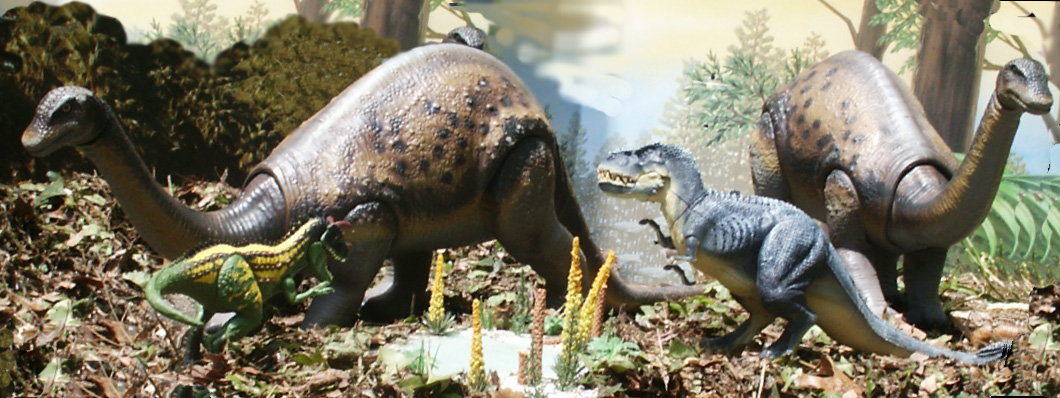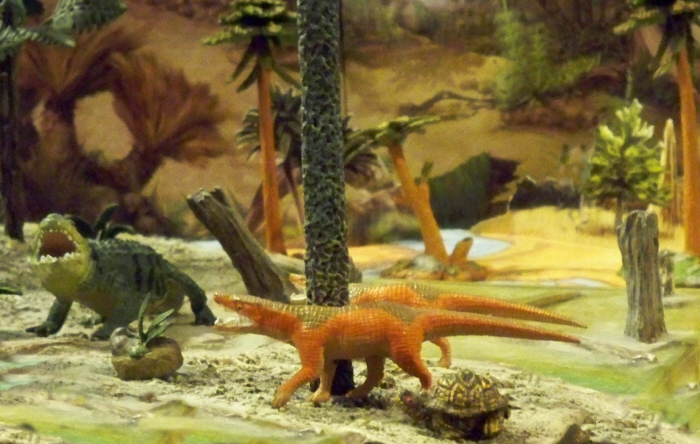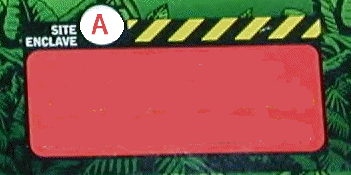South America in the
Late Cretaceous
Aptian - Aptian period, South American dinosaurs have been poorly known. Starting in the Cenomanian-Coniacian in this part of Gondwanaland, carchardontosaurs fill the top predator slots in South America. Abelisaurs are the medium to smallish predators and titanosaur sauropods are the medium and large herbivore roles. Diplodocids are now rare in the fossil record. There are spinosaurids from Brazil. Iguanodonts are small herbivores. Updated 091412
This is an increasingly well documented fauna characterized by large sauropods and allosaurids associated with the gymnosperm flora. Others are the Late Jurassic faunas of Tendaguru and Lourhina and the Early Creteacous Acrocanthosaur-Astrodon fauna.

There are very large sauropods such as Chubutisaurus, large carchardontosaurs and bizarre abelisaurids and spinosaurids theropods in South America.

There was a much wider diversity of crocodylians during mesozoic. In the Bauru Basin of Brazil, for instance, the remains of at least five different groups of ancient crocodylians have been found, representatives of the notosuchids, sphagesaurids, baurusuchids, trematochampsids and peirosaurids all being found there. Montealtosuchus was a peirosaurid, a group of crocodylians that occurred in Gondwanaland during the Cretaceous. The 5.5-foot-long Montealtosuchus was a long-limbed and extremely agile animal that was adapted for life on dry land.
Previous Page for Early Cretaceous and the Next Button for Late Cretaceous Sauropods
